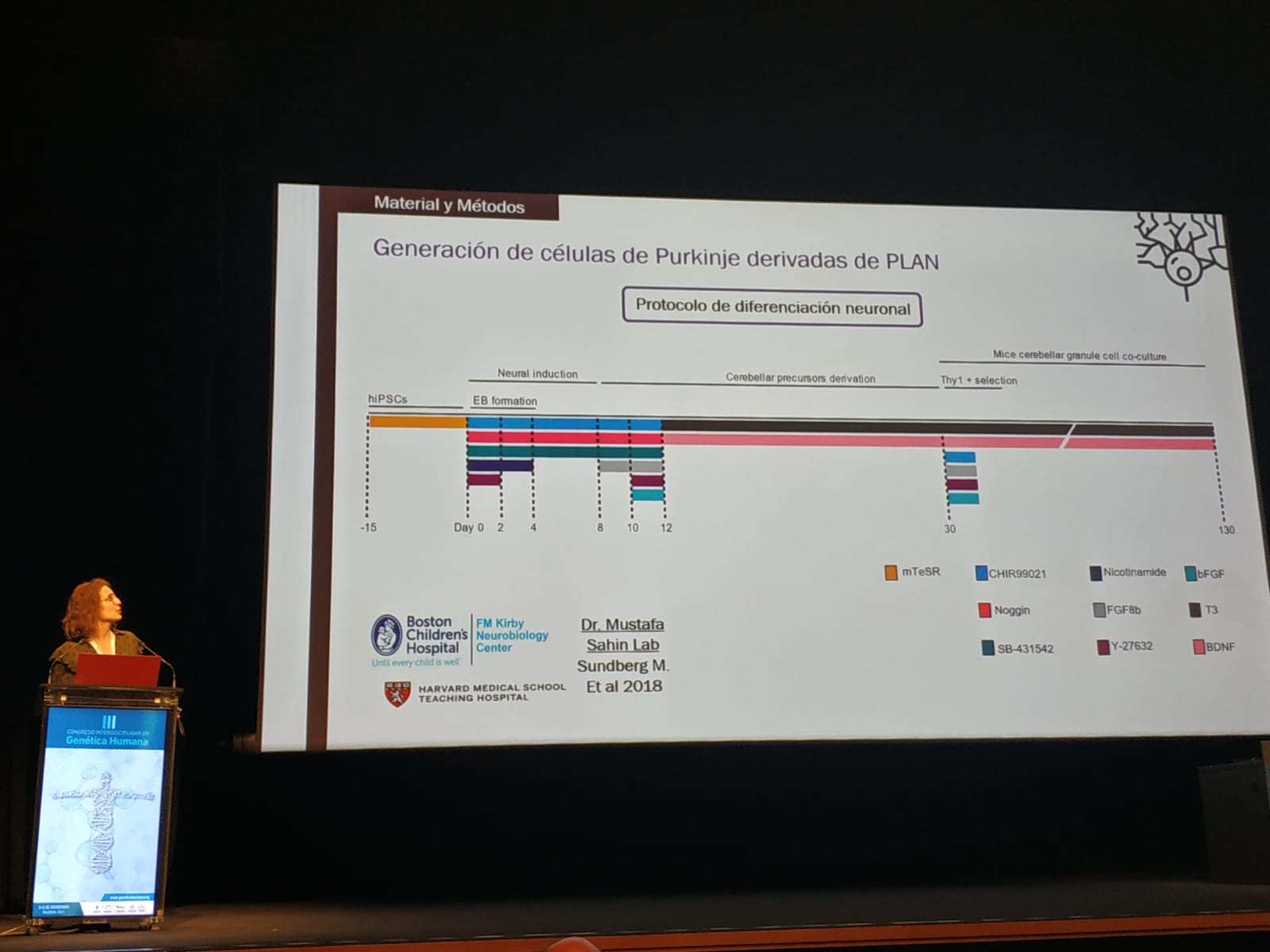Inaugural International Scientific Conference on INAD
During November 10-11, the inaugural international scientific conference on infantile neuroaxonal dystrophy (INAD, Infantil Neuroaxonal Dystrophy) and other types of neurodegenerative diseases associated with PLA2G6 (PLAN; PLA2G6-Associated Neurodegeneration) was held. We presented a written communication defended by Candela Machuca with the title: "Modeling PLAN using neurons derived from human induced pluripotent cells". Candela described the CPC (Cerebelum Purkinje Cell) model and its characterization. The preliminary findings show that in the disease mechanism underlying PLAN, different pathways are altered: iron metabolism, ferroptosis, apoptosis, endoplasmic resticle stress, and autophagy.





